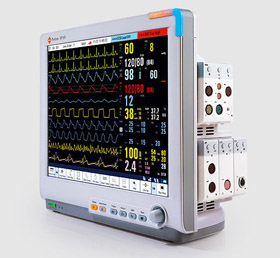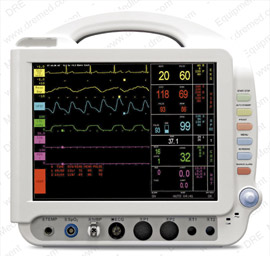Categories
Anesthesia Monitors

In modern office procedures narcosis (central pain treatment) is applied in very rare cases; these measures, as a rule, are undefended – it is like pot shooting. Nowadays monitoring is the best possible measure of sedation implementation with simultaneous control of patient’s state.
Monitoring is obligatory for the observation of pathological states of a patient, connected with the risk of developing of life-threatening complications. Also, monitoring is carried out during extensive operations in intensive care units. For the day anesthesia monitor is considered to be needful equipment for every modern hospital.

Anesthesia Gas Monitors
An anesthesia gas monitor is a scope for the observation of vital parameters of a human organism during and after operations. Critical care and anesthetic management are processes which require a continuous monitoring of patient’s state. Gas monitors have been developed on the basis of patented modern digital technology of analysis of five gas agents. These multipurpose, reliable and compact devices work simply, quickly and with greater accuracy.
Gas monitors are used in resuscitation and intensive therapy units. Depending on intended use, bedside monitors are designed to the observation of vital functions of patients of any age category. For multimetric control and change registration multifunctional monitors with the ability of individual information models setting are used.
Veterinary Anesthesia Monitors
The monitor considerably simplifies surveillance over the animals which have undergone surgery under general anesthesia and helps to keep key vital functions under control.
Constant monitoring of vital signs helps veterinary physicians to detect deviations from the norm and make necessary decisions in due time.
A modern veterinary monitor is a complex multifunctional device, which combines functions of many veterinary instruments. A plenty of important details can be included into it: integral batteries, a thermal printer, heart rate and NIBP (non-invasive blood pressure) sensors, respiratory rhythm and body temperature sensors, programmes for the outcome analysis.
Qualitative veterinary monitors provide correct results in any situation: low blood flow, big volumes of expectoration, overventilation, vibrations, the increase of air temperature and barometric pressure.
On the screen the vet can see a complete picture of physiological functions state of the patient, which helps him to put on correct medication and correct the therapy course in due time when alarm signs appear.
The device can connect to a computer so that veterinary physicians can save the results and maintain a database. Automatic fixing of life indicators significantly saves the time of specialists.
When choosing a veterinary monitor for the patient you should pay attention to the specialization of a clinic, the level of training of veterinarians and to the settings that must be included in the range of monitoring.
Modern anesthesia monitoring equipment can support from 2 to 7 graphic channels and possesses the option of disabling physiological functions that are unnecessary for the patient. A number of models support the ability to use third-party displays with any screen resolutions. Graphic display adjustment allows the outpatient staff to secure maximum comfort of major parameters control.



